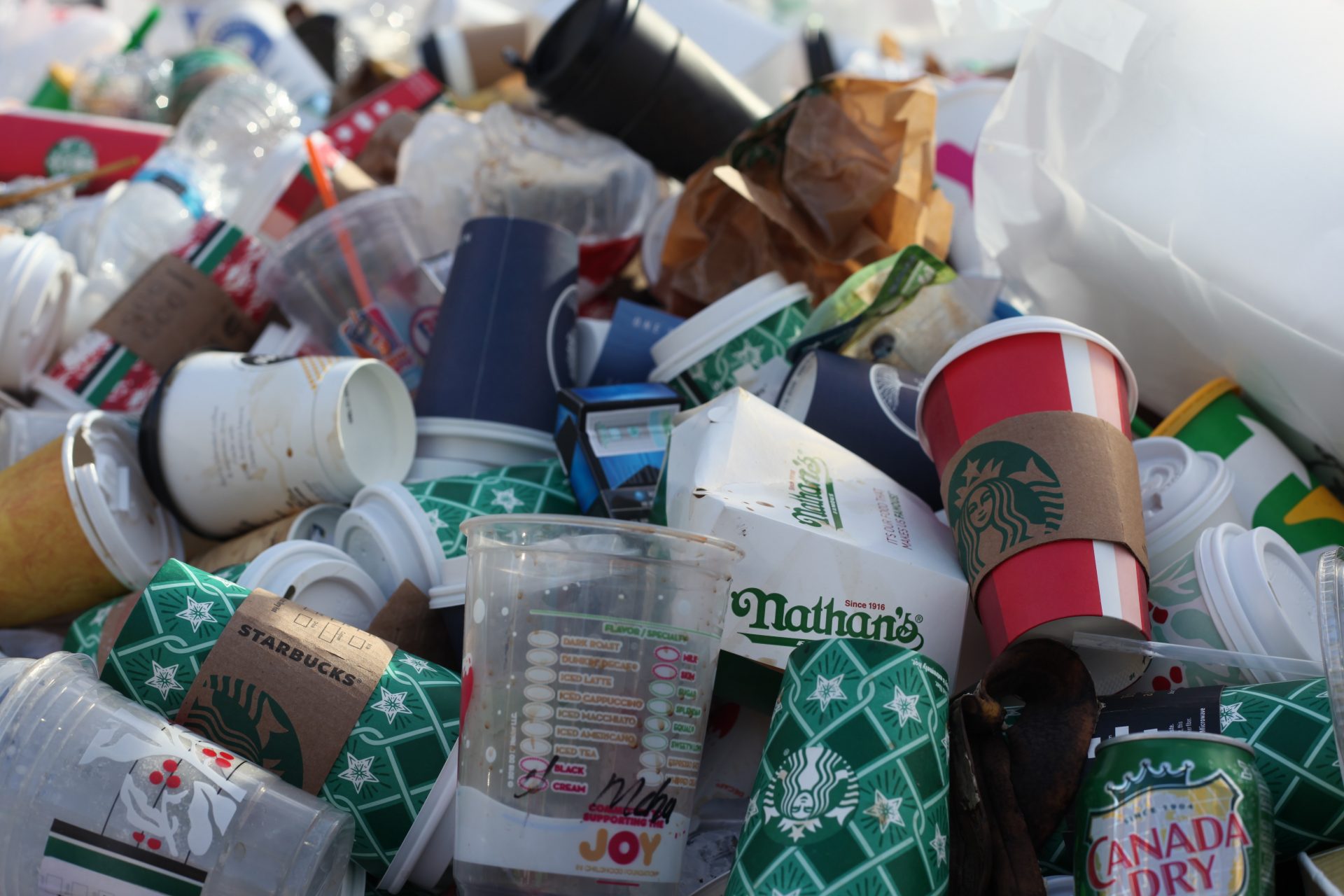In my previous blog on food service giants, we looked at examples of some great initiatives towards a more sustainable food service sector, but it is clear that there is still a long way to go.
One of the key challenges remains that with the vast majority of food service consumed on-the-go, a lot of it ends up as litter either due to lack of available disposal facilities or poor consumer behavior.
This was highlighted by a 2021 study by Morales-Caselles et al which found that:
Takeaway food and drink items dominated global ocean plastic litter, with 4 of the most commonly used takeaway single use plastic items making up more than 50% of all ocean pollution.
Morales-Caselles et al, 2021
This is a stark statistic, but unfortunately not at all surprising.
Even big players in the food service industry are completely reliant on public area / on-the-go recycling and disposal facilities once the product has left the premises, and this isn’t consistent at all. Consumers are unlikely to take this type of packaging home, so how do we tackle this issue and how do food service retailers make responsible decisions in this area?
Although there is clearly a challenge, it’s not all bad news, as governments and local authorities are starting to do more to support. We have seen three key priority areas when it comes to street waste and recycling initiatives:
1. ‘Binfrastructure’
In recent years, there has been an increased focus on street waste and recycling initiatives. DEFRA in the UK has dubbed this ‘binfrastructure’, with strategies aiming to have the right bin available in the right place to correctly sort and recycle on-the-go waste.

A local example to me of a project in this area is Edinburgh’s #InTheLoop campaign by Hubbub. This pilot campaign introduced 58 new recycling points and 16 coffee cup bins in Edinburgh city centre, with bright, clear messaging to direct consumers to the correct recycling behavior.
The campaign resulted in a massive 46% uplift in recycling in Edinburgh, with similar statistics in other cities such as the #LeedsByExample initiative. This is of course a great achievement and proof of concept, but to truly change behavior and increase on-the-go recycling rates we need permanent solutions and the sustained investment that goes with it.
2. Recycling / reuse – beyond kerbside
More recently, we have also seen an increase in recycling and reuse options in other public settings. On a recent flight, I was heartened to see that at least one thing has changed. Where previously, cabin crew would whizz down the aisle collecting rubbish without a second thought, for the first time, they had 2 different bags: one for recycling and one for general waste.
There are also several other examples of bringing reusable and recyclable options into hospitality and food service, including deposits / reusable cups at sports fixtures and gigs and recycling promotions and installations such as Every Can Counts. A small step, I know, but to really drive a circular economy, it is imperative we move beyond household waste and think of all types of consumption: be it gigs, festivals, hospitality or travel.

3. Legislation
Last but by no means least, legislation of course has a significant part to play in supporting a circular and sustainable waste strategy in the food service industry. For example, bans across Europe and beyond of problematic single use plastics such as straws, cutlery and expanded polystyrene food containers.
Other countries have gone further still, such as France’s Circular Economy Law (AGEC) requiring restaurants with over 20 covers to provide reusable packaging for eating in, changing the entire consumer experience to a more circular one.
The UK’s upcoming EPR framework also goes some way to address this kind of packaging waste, although refinement has still to be made. Companies producing packaging deemed to be in ‘commonly littered’ categories must report these as ‘street bin waste’, allocating the collected EPR fees to appropriate management of this waste and also funding anti-littering communication.
This is a valiant effort to tackle this category and channel funding more appropriately, and although it is a steep hill to climb within the complex realms of a new EPR scheme, it is one that needs to be tackled. We collectively need to move beyond the focus on kerbside recycling, as this is only one part of the problem.
Only time will tell, but one thing is for sure, a joined-up approach to packaging and packaging waste is imperative to truly work towards a better future, and we have to work together to face these challenges head on.
Gillian Orr, Aura
Here at Aura, our partnership with the National Oceanography Centre helps us to inform and educate our clients. The NOC combats the challenge of ocean pollution by combining scientific understanding with education, conducting research projects to truly understand the effects of plastic contamination in our ocean ecosystem and taking action towards cleaner, safer and sustainable oceans.
Our next blog in this series will look at legislation in more detail, and whether current measures alone are enough to tackle the complexity of packaging in food service.














